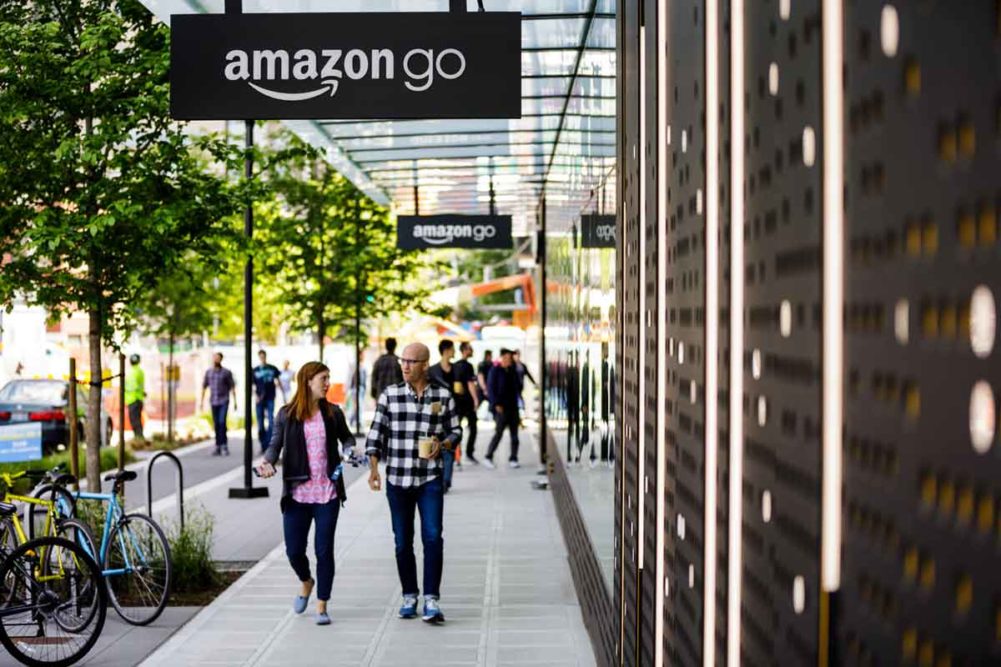NASHVILLE, TENN. – In April 1988, Neil Stern, now a senior partner with McMillanDoolittle, Chicago, wrote, “We may have seen the future…and we’re impressed.” This was in response to the first Walmart Supercenter opening in Washington, Mo., an event that forever changed grocery shopping.
 Speaking at the Annual Meat Conference in Nashville on March 2, Stern explained that in 1988, 90% of grocery stores were of the traditional format. Twenty years later, that figures drops to 44%, with non-traditional formats, such as supercenters, club stores and dollar-style formats, having 40% share. To survive, suppliers and retailers must change the way they do business. This includes upgrading and remodeling meat departments, with an emphasis on fresh, artisan and in-store preparations, such as smoking, grilling and dry aging.
Speaking at the Annual Meat Conference in Nashville on March 2, Stern explained that in 1988, 90% of grocery stores were of the traditional format. Twenty years later, that figures drops to 44%, with non-traditional formats, such as supercenters, club stores and dollar-style formats, having 40% share. To survive, suppliers and retailers must change the way they do business. This includes upgrading and remodeling meat departments, with an emphasis on fresh, artisan and in-store preparations, such as smoking, grilling and dry aging.
“In the past decade, retail has grown at a compound annual growth rate of 3.5%, with sales in 2019 nearly at $5 trillion,” Stern said. “You think everything must be great, right? Well, 2020 started with three retail bankruptcies: Fairway, Lucky’s and Earth Fare.”
He reassured attendees that “physical retail isn’t dying. Bad retail is.”
“The retail industry is in a state of extreme disruption, with the rise of millennials, urbanization, digitalization and Amazon,” Stern said. “And while online is grabbing a bigger share of overall retail sales, food and alcohol is what brings total online sales down.”
It was only 2% in 2016 and is projected to be 5% in 2021. But, he emphasized, it’s rapidly ramping up with the changing consumer face. Amazon Prime is driving this change, with membership having tripled to 150 million users between 2015 and 2020, with Prime members having spending power and attracting higher income households. But lower income households crave the convenience of online grocery shopping, too. Discounters such as Walmart are responding with their own pick-up at store solutions. By 2025, 14% of food and alcohol sales are projected to be made online, with click and collect and drive-up fulfillment centers fueling much of this growth.
“Amazon Prime and Walmart are dividing the online shopping world,” Stern said.
The other 86% of food and beverage sales will be made in bricks and mortar; however, he said we should expect drastic changes in what supermarkets look like. Expect more automation and robotics with reduced human interaction, as well as more foodservice platforms inside the stores.
“People are eating out more,” he said.
Retailers must respond. In-store dining featuring meat and poultry from the butcher department that is prepared in front of the consumer adds value to the shopping experience.
To keep bricks and mortar alive, retailers must address three areas of disruption, the first being “extreme value.”
“It’s the treasure hunt,” Stern said. “It’s finding something you did not expect. Value is the driver. Costco is a treasure hunt and so is private label.”
It’s all about being the cheapest retailer with the lowest sustainable costs; providing an environment centered around discovery and newness; and creating compelling alternatives to major brands that customers love and trust.
“Aldi is the retail elephant in the room,” Stern said. “The company expects to have 2,500 stores by 2022. It’s expanding and growing current stores and creating a fresh-forward format to attract new shoppers.
“Low prices don’t have to mean low excitement. Private label is very likely to grow much faster than conventional.”
He said that both Costco and Aldi with their own branded meat and poultry are doing very well. For some retailers, part of the treasure hunt includes artisan products, such as store-made fresh sausages and marinated products ready for cooking. Butchers that feature products from local farms are smart to tell the story of the farmer, engaging the consumer and informing them the hunt is over. They’ve found the prize.
The second area of bricks and mortar disruption is extreme convenience. That’s what consumers are getting from online shopping, so to keep them coming to the store, it needs to be more enjoyable.
“Focus technology efforts on removing friction from the customer experience,” Stern said. “Eliminate the pain points from shopping.”
This includes smaller store formats focusing on specific food and beverage sectors, such as grab-and-go and products for single households, as well as plant-based or organic only. Provide the convenience of mobile ordering of a coffee, so it’s ready to carry down the aisle as you load up the cart.
Dedicate a case to single portioned meat and poultry. Offer marinated products with accompanying sides. Show the shopper what’s for dinner.
“Packaging and displays need to work harder,” Stern said. “It’s still about solutions.”
That’s the third disruptor. This craving for an extreme experience. That’s something you cannot get online.
“There’s game-changing power through great displays and experiences,” Stern said. “Retailers are providing Instagrammable moments at key times in the experience.”
Bring in elements that invite customers to stick around and linger in the store. Create product wows around a specific category, he said.
In-store dining throughout the various departments allows shoppers to taste what they might purchase. In-store food prep shows how their food is made. Think fresh mozzarella produced in the cheese department. Produce gets cleaned and chopped by the vegetable butcher. Have a self-serve dry-aged beef case, where the meat is tagged by age and primal cut.
“Make theater part of the production,” Stern said. “And focus on solution selling. Offer knowledge and information to aid purchase decisions.”



